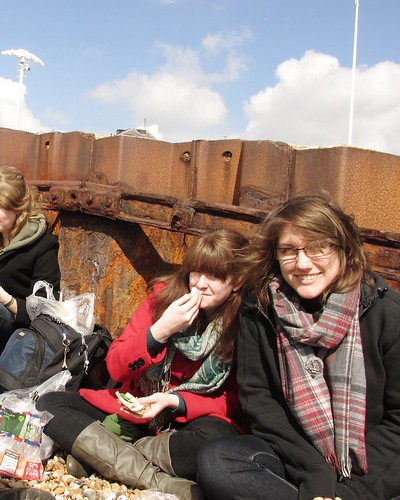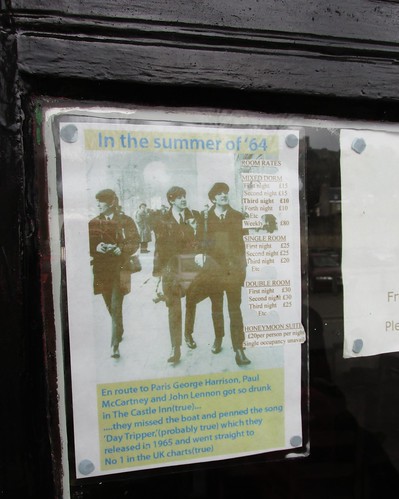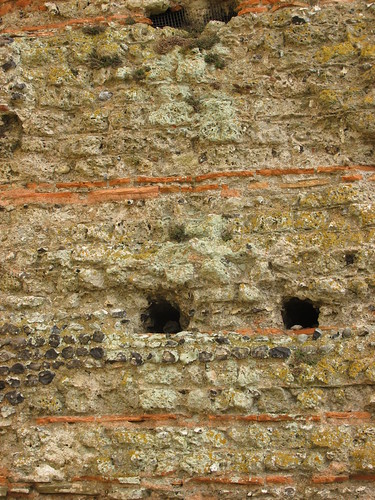Everyone up at 5:15am and out the door to catch the bus at 6:12 to get to Dover by lunch.
We stopped for coffee while waiting for our connection through London's Victoria Station. Because of the business of the shop, we sat all on top of one another in a single booth. It being Good Friday, we read John's gospel account of Christ's death and resurrection. While sitting there, I was struck by the privileged of reading the scriptures at all in such a public, crowded space, much less to read it aloud. People were looking over. A couple looked annoyed, but the rest just seemed more surprised than anything else.
Once we did get to Dover, we made a bee-line for the sea and were not disappointed. While it had been snowing on and off while we were traveling and continued to do so during our entire trip, the clouds began clearing and the sun came out when we arrived in the harbor.
Lunch was a perfectly simple affair of bread, cheese, and other tidbits we'd brought with us such as carrots, lettuce, and apples.
With the tide coming up and threatening our warm spot out of the wind, we decided to head out onto the Prince of Wales Pier. It afforded us with some beautiful views of the cliffs and the rest of the harbor.
By that time it was one and we went in search of our hostel to check in and leave our bags. The little place claims to be the oldest Inn in Dover and also holds that three of the Beatles, George, Paul, and John, got so drunk there one evening that they missed their boat to Calais and wrote "Day Tripper." An urban legend most likely, but still entertaining.
To ward off some of the cold, we stopped in for tea, now both a necessary habit and ritual.
We knew we wanted to get up on top of the cliffs, and, once we weren't carrying our bags, we headed up towards the castle which dominates the entire bay. Luckily it was open and we got to wander about the massive grounds as well as in and around the confusing passages inside. It has been in use since the Romans used the site as an outpost. Note the distinctive rows of Roman brick in the lighthouse wall below. The Plantagenets took it after that, the Normans had their turn, and it was modified again for use during World War I and II.
The views of the surrounding countryside were stunning, including another ancient groundwork fortress (second picture).
We were also gold that we would be able to see France from the top of the keep. Laughing together on that impossibility, we were hit in the face by a beautiful view of the cliffs surrounding Calais. I never would have guessed that it was that close. Just beautiful.



No comments :
Post a Comment